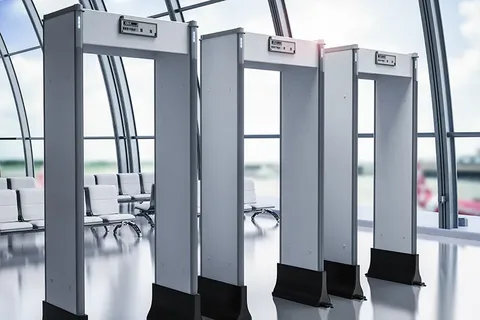
Table of Contents
Learnto operatean impedanceMeter!Basic measurement techniques
Overview
Impedance metersmeasure impedance,or resistance to the flow ofAC.(AC). Thispage offers a thoroughoverview of the basics ofimpedance, the methods used to measureimpedance, and tips on howto use an impedance meter.
What isimpedance?
Let’s begin by delving into the concept ofimpedance. Inshort, impedanceisa measurement ofresistance to thecurrentfromAC current.AC current.
When you connect an electricalproduct, motororotherapparatus totheACenergy source,current will flowthrough thecircuitry of the device. Impedance iscalculatedby dividing the voltage insuch a circuit byits current. Inshort, impedance canbedefined as the limit offlow of currentintheAC circuit. Impedance isindicated withit’ssymbol “Z” and measured inthe ohms(O), the sameinstrument used to measureDC resistance. Thegreater the impedancethemore resistance there isto thecurrent flow.
What is the measurement of impedance?
Since impedance itself is notan obvious phenomenon, it isimportant to have a measuringinstrumentin order to measureit. Instrumentsthat can measureimpedance are impedance meters,LCR meters and impedance analyzer. There arevariousmethods in which impedance canbe measured.
Bridge method
Thismethod makes use ofa bridge circuit to calculateanunidentifiedresistance. It requiresthat balance adjustmentbeaccomplished using a gaussometer.While the method offersa high degree of accuracy(about 0.1%), it’s poorly suitedto high-speed measurement.
I-V method
This methodcalculates impedance by measuringthe voltagesacross adetector and an unknownimpedance. Itis also possibleto testsamplesin which the sample is grounded.When the impedance grows,themethod becomes more vulnerabletothe effects ofthevoltage meter.
The RF I -V method
This method is based onthe samebasic measurement principleas the I.V. method. Itpermits measurement of high-frequency impedanceby using a circuit , whichmatches the characteristic impedancecoaxial cables with high frequency andthe high-frequency connector.It’s difficult to use thistechnique for wideband measurement becausethefrequency band of measurementislimiteddue to the transformer of the testing head.
Automatically balancedbridge system
This method uses the samebasic measurement principle asthe bridge method. Itgives coverage toan entire frequency range(1from mHz up to 100 MHz).However, the coveragedoesn’t extend to highfrequencies.A number ofLCR metersemploy this technique.
Each impedance analyzer method offers its ownadvantages and disadvantages. Therefore,you’ll need to clearly definethe type of impedance thatyou’ll need to gaugeprior to choosing the appropriatemethod for you.
The use of an impedance gauge
The methodemployed to measure impedanceis dependent on the instrumentutilized.Like Hioki’s LCRMeter IM3523measures impedancewith greataccuracy across a wide rangeofmeasurementfrequency settings.
-
40 Hz measurement
-
200measurement in Hz
In addition to normal measurement This instrument can be used tocontinuously and quickly monitor differentparametersunder differentconditions(measurement frequency andthe signal level).
-
C-D+ESR Measurement of Capacitors
impedance analyzeralso allows for the saving ofas much as 60 setsof measurement parametersor up-to128correction values for open/short adjustmentandlength correction.It is possible to load groups of settingsquickly loaded in one goto improve workefficiency.
In addition, the instrument’s exteriorcontrol terminalsallow you to buildautomatedtesting lines quicker.
Causes of instability in impedancemeasurement
The measurement methodutilized, impedance metercould return a different valueevery time a measurementmade. Ifyour impedance meter’smeasured values do not stabilize make sure you check the following factors:
The parasitic component of these components is beingrecorded
In addition to the designvaluesfor resistance and reactance,componentscontain parasitic components thatresult in a variation in the measuredvalues.Thelength ofthe leads that are connectedtothe components and thedistance between themcouldcause the measured values to differ.
Measurementof the environment
The results of Impedance measurements areaffected by a range offactors, such astemperatures ofonlyresistors,as well as capacitors and inductors along withthe capacitance of the probe and the stray.
Thischaracteristic requires stepsthat ensure a consistentmeasurement environment and averaging multiplemeasurements instead ofusing just onemeasurement todeterminethevalue.
DC bias
DC biasis avery smallvoltage that is present in measuringdevicesand circuits.For instance, it happensin the case of wires and probes thataremade from different components. Theresultant thermal electromotive forcecreatesDC bias.
Summary
Impedance determines the degree of resistance toan AC current. Itsmeasurement requiresa dedicated instrument.Since there’s a myriadofmeasurement methods It is essential to choosethemost effective method, based onyour requirements and each technique’sadvantages anddrawbacks.
Impedance measurements are extremelydelicate and prone to variabilitydue to various factors such asthe measurement’s environment, frequency, andDC bias. Thischaracteristic necessitatesprocedures like averaging severalmeasurements.
Applications
-
Measurements of the impedance of the antenna on Smart Keys/Imobilizers
-
MLCC
-
Conductive polymer capacitors
-
Tantalum capacitors
How to Use
-
LCRMeasurement principles of the meter
-
How to Use an LCR Meter: Basic Knowledge





